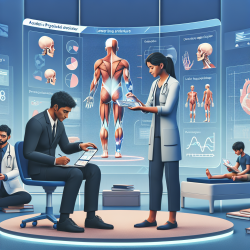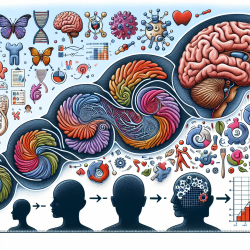The recent study titled "Relationships between lower limb muscle architecture and activities and participation of children with cerebral palsy" provides crucial insights for practitioners working with children with cerebral palsy (CP). The research underscores the importance of understanding muscle architecture and its direct correlation with the functional capabilities and participation levels of children with CP. This blog aims to distill key findings from the study and suggest practical ways for practitioners to enhance their skills and improve outcomes for their students.
Key Findings from the Study
The study conducted by Ko, Kim, and Lee (2013) examined the relationship between the muscle architecture of the lower limbs and the functional activities and participation of children with CP. Here are some of the significant findings:
- Muscle thickness and strength of the knee extensor and ankle extensor were found to be critical indicators of gross motor function and daily activity levels.
- Children with CP exhibited significantly lower muscle thickness and strength compared to typically developing children, impacting their gross motor function and participation in daily activities.
- There was a negative correlation between muscle thickness and the scores on the International Classification of Functioning, Disability, and Health for Children and Youth (ICF-CY), indicating that lower muscle thickness is associated with higher levels of functional impairment.
Practical Applications for Practitioners
Based on these findings, practitioners can adopt several strategies to enhance their therapeutic interventions:
1. Focus on Strengthening Lower Limb Muscles
Given the critical role of knee and ankle extensors in gross motor function, practitioners should prioritize exercises that target these muscle groups. Incorporating strength training exercises into therapy sessions can help improve muscle thickness and strength, leading to better functional outcomes.
2. Utilize Ultrasonography for Muscle Assessment
Ultrasonography can be a valuable tool for assessing muscle thickness and monitoring progress. By regularly measuring muscle architecture, practitioners can tailor their interventions to address specific deficits and track improvements over time.
3. Emphasize Functional Activities
Functional activities that mimic daily tasks can help children with CP apply their muscle strength in practical contexts. Activities such as standing, walking, and climbing stairs should be integrated into therapy sessions to promote real-world functional gains.
4. Foster a Multidisciplinary Approach
Collaboration with other professionals, such as physical therapists, occupational therapists, and educators, can provide a holistic approach to intervention. A multidisciplinary team can address various aspects of the child's development, from motor skills to cognitive and social participation.
Encouraging Further Research
While the study provides valuable insights, further research is needed to explore the long-term effects of muscle strengthening interventions and their impact on participation and quality of life. Practitioners are encouraged to stay informed about the latest research and incorporate evidence-based practices into their work.To read the original research paper, please follow this link:
Relationships between lower limb muscle architecture and activities and participation of children with cerebral palsy.










